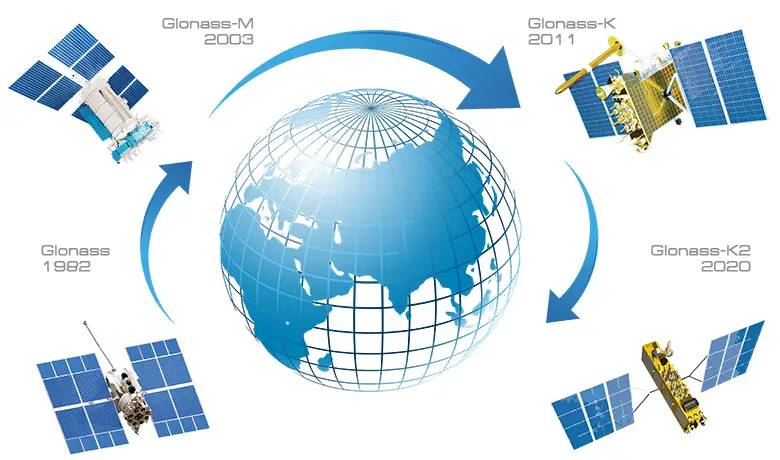GLONASS Current Status
As on June 5, 2021, the GLONASS system consists of total 27satellites, of which 23 are operational, 1 is undergoing maintenance, 1 as Spares and 2 in flight tests phase. The system requires 18 satellites for continuous navigation services covering the entire territory of the Russian Federation, and 24 satellites to provide services worldwide.
The system GLONASS covers the navigational floor 100% territory to Russia.
The GLONASS system’s capability enhancements through satellites generations are listed in the table below.

GLONASS Satellite Generation
1st Generation – GLONASS – The first generation of GLONASS (also known as Uragan) satellites were all 3-axis stabilised vehicles that weighed around 1,250 kg and had a small propulsion system to allow for constellation movement. They were eventually upgraded to Block IIa, IIb, and IIv vehicles, each with incremental improvements.
Now, all the satellites have been decommissioned. It has been superseded by the GLONASS-M, the second-generation satellites.
2nd Generation – GLONASS M – GLONASS-M (also known as Uragan-M) are the second generation of GLONASS satellite constellation. It had its debut launch in 2003, and is in the process of being phased out. Its production is expected to finish in 2015 and as of July, 2015, its last launch was expected in late 2018.
Some satellites are in use and has been superseded by the GLONASS-K, the third-generation satellites.

3rd Generation – GLONASS K – GLONASS-K is the latest satellite design intended as a part of the GLONASS satellite navigation system. The first satellite was launched on 26 February 2011, it is a substantial improvement of the previous GLONASS-M second-generation satellites, having a longer lifespan and better accuracy. Glonass-K consist of 26 satellites having satellite index 65-98 and widely used in Russian Military space.
4th Generation – GLONASS K2 – GLONASS-K2 is the next satellite design intended as a part of the GLONASS satellite navigation system. The launch of the first next-generation GLONASS K2 satellite is set for late 2021, according to a statement by Nikolai Testoyedov, CEO of the Reshetnev Information Satellite Systems Company, the satellites’ producer. The satellite will begin the next modernization phase of Russia’s GNSS.
It is an evolution of the previous GLONASS-K third-generation satellites, adding CDMA signals, improving accuracy and increasing power. It is 70% heavier and has 170% more power.
Also Read –
Source –


